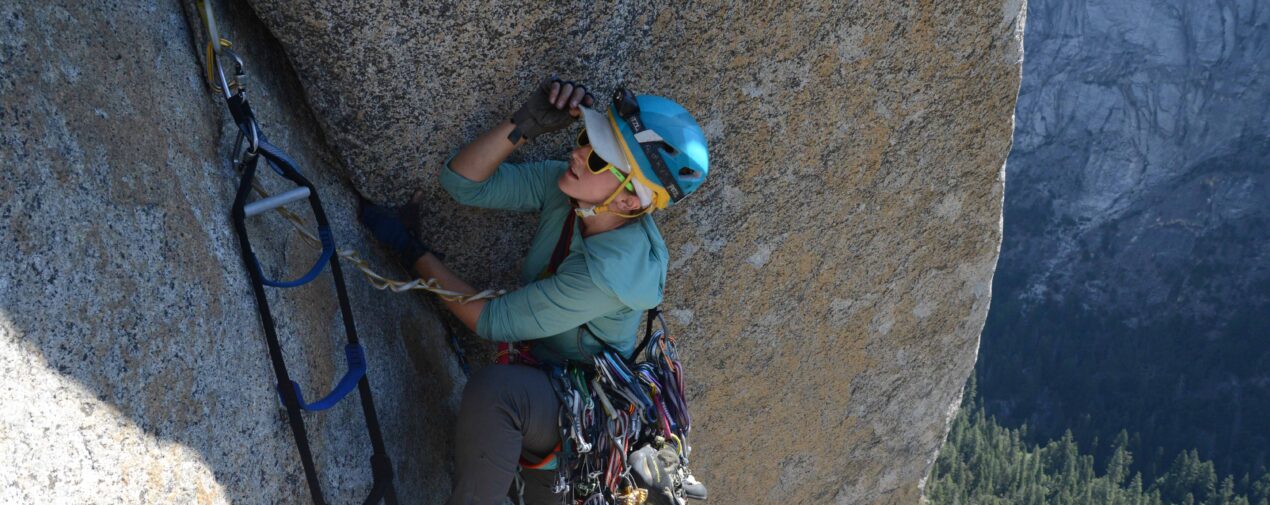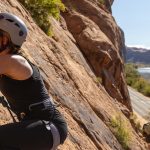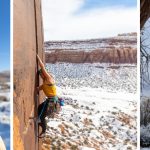A Beginners Guide to Rock Climbing Part 1
Welcome to the definitive guide to rock climbing for beginners. In this space, Part 1, we will cover what rock climbing is and a few different styles of rock climbing for you to try. In Part 2, we will go over what equipment you will need in order to start rock climbing all on your own!
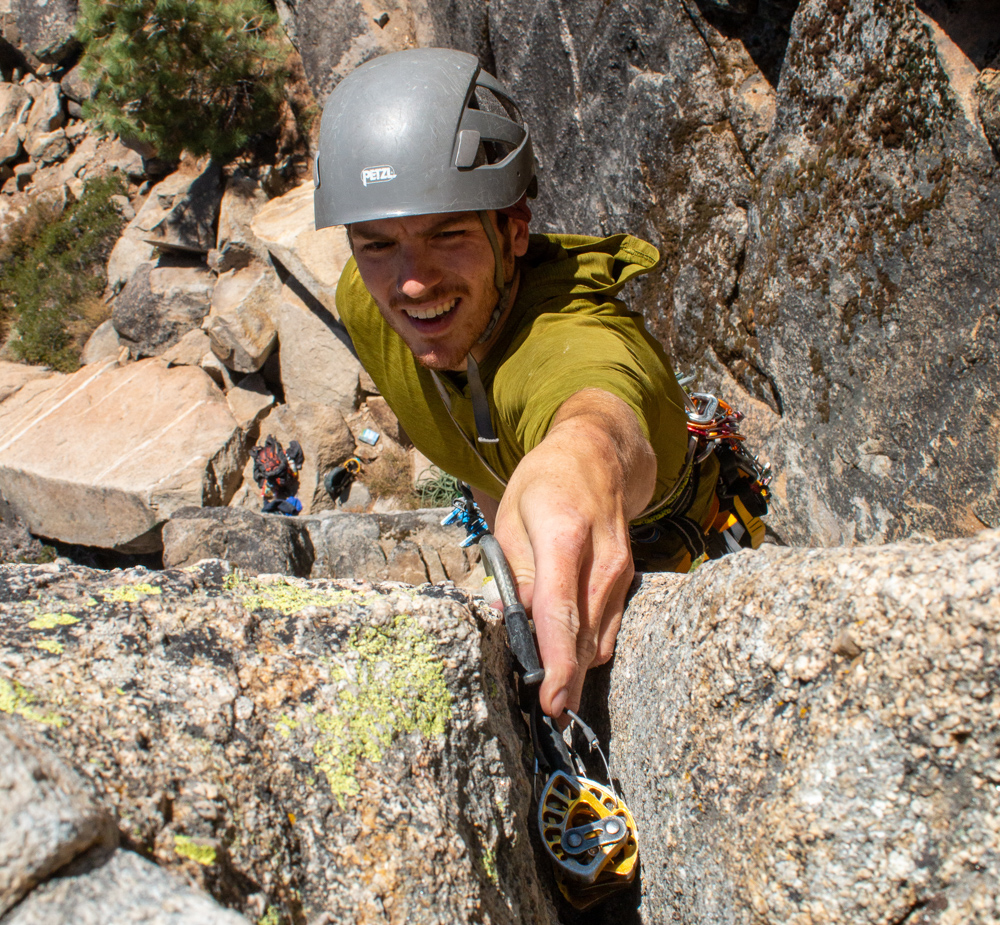
What is Rock Climbing?
Rock climbing is the recreational activity of using your hands and feet to scale various features. You can rock climb indoors on artificial climbing structures, or outdoors on real rock (and sometimes ice)! It’s a fun and compelling sport and the people who partake in it are passionate. The beauty of rock climbing is that there is an endless variety of climbing for every age and skill level. No matter how strong you are, there are some excellent climbs for you!

What Types of Rock Climbing Are There?
You can climb safely without climbing ropes and solely the use of bouldering pads. You can climb safely with ropes and harnesses nearly anywhere there are rock formations!
Before we dive into different disciplines of rock climbing, let’s go over the grade rating system.
V Scale
The V scale is most commonly used in North America for bouldering. This scale ranges from V0 or VB all the way to V16. It breaks down like this.
V0-V3: Easier
V4-V6: Moderate
V7-V9: Difficult
V10-V16: Expert
Yosemite Decimal System
The Yosemite Decimal System (YDS) is used in North America for any route that requires ropes. The rating goes from 5.0-5.15, but can also include modifiers such as 5.10+ or 5.11c. These modifiers are intended to give nuance within a given grade. For example: a 5.10a is easier than a 5.10c, but both are easier than a 5.11+. The use of a,b,c and d vs + or – is entirely dependent on the cultural location of the climb in question.
A note on grades
Rock climbing is an entirely subjective sport, which means that grades vary wildly from location to location. The 5.9 of Yosemite Valley is drastically different from the 5.9 of Wild Iris in Lander Wyoming. This disparity is partly cultural, partly stylistic, and partly because our collective understanding of grades has changed in the 70+ years since the sport has taken off. If you find yourself being frustrated on a rock climb that you find easy in another part of the country, take solace in the fact that this is a universal experience for rock climbers!
Now, rock climbing is a diverse sport with many disciplines, so which one is right for you?
Gym Climbing
Gym climbing is the easiest way to get started. Most large cities have indoor climbing gyms these days where you can learn the basics of rock climbing. This includes how to tie into the rope, how to belay your partner safely, footwork technique, and proper spotting etiquette.
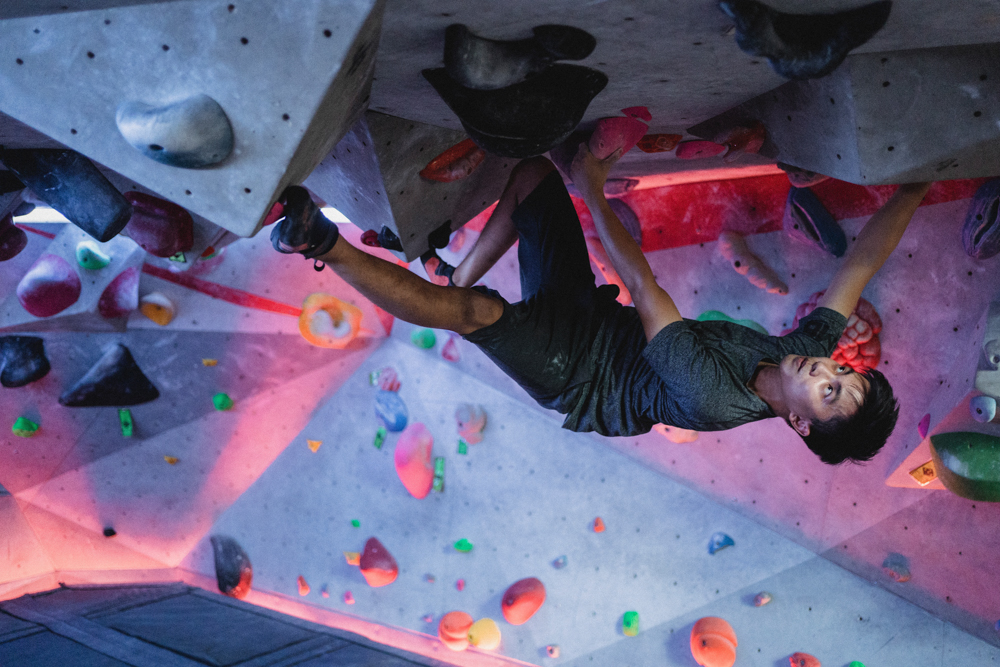
Climbing gyms have a monthly membership fee that allows you access to the gyms facilities. These facilities can include:
Top rope climbing walls where you tie into an existing rope using a specialized climbing harness and are belayed up the wall by your climbing partner who is trained by gym staff to safely belay you up the route, as well as lower you back down to the ground.
Lead Climbing walls which are very similar to the top rope walls, except that the ropes are not pre-hung above the climbers. Lead climbing is a more advanced technique that involves more training for both the leader and the belayer. When leading, you are tied into the rope, and clip into quickdraws that are attached to the climbing wall as you climb past them. These quickdraws act as a progress capture if the leader were to take a fall. The route is finished once the leader makes it to the top, after successfully clipping all of the quickdraws, and may be lowered by the belayer.
Some gyms employ auto belays which allow for a single person to climb up the wall without the assistance of a belayer. The auto belay device consists of a mechanism that automatically takes up slack in the rope as the climber ascends and locks in the event of a fall. It typically uses a combination of friction and a braking system to control the descent speed of the falling climber, providing a gentle and controlled descent.
With the auto belay, you just clip the hanging carabiner into your belay loop, lock it, and climb on!
Climbing gyms also generally have bouldering walls. Bouldering walls are shorter climbing walls that you can use without the assistance of any kind of ropes. These walls are generally 8-15 feet tall, and have a variety of climbing routes on them. Climbers will take turns trying the existing “problems” that have been created or “set” by the climbing gym staff. These problems are set monthly or weekly, depending on the gym and usually range in difficulty from V0-V12.
On top of the climbing structures, climbing gyms have training facilities. These can include hang boards, which are specialized training boards meant to increase finger and tendon strength.
Bouldering
Bouldering is climbing without the use of rock protection, ropes, harnesses, or even a belay! Don’t fret however, this is not free soloing. Bouldering is typically done by climbing features that range in size from only a few feet off the ground to around 25 feet tall. There are some rare exceptions to this rule, however it is not standard.
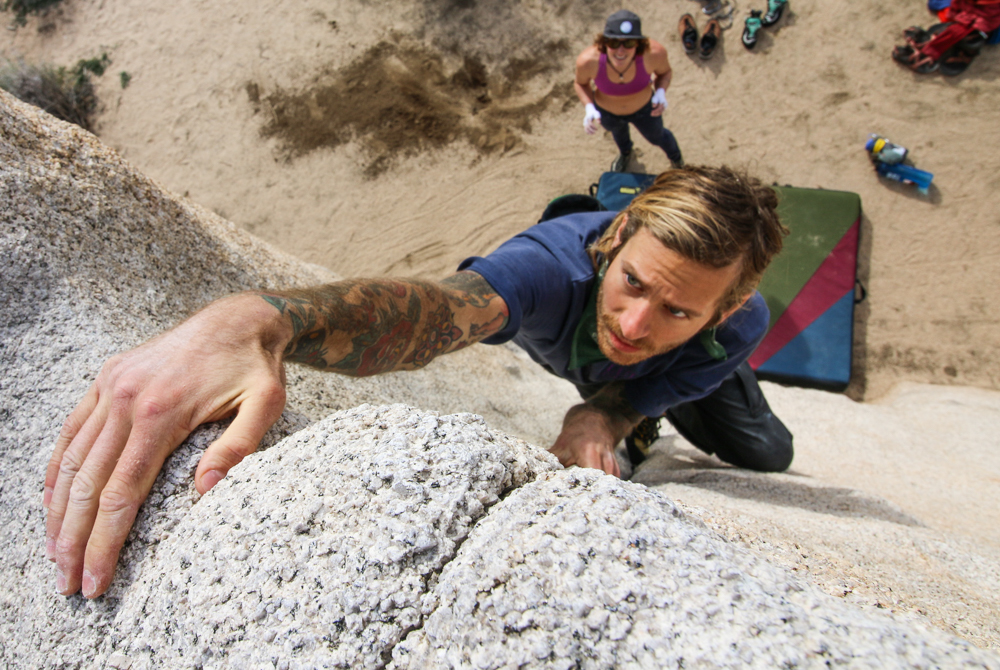
In order to protect the inevitable falls the climbers will take, they make use of crash pads. These crash pads are large foam structures that resemble oddly shaped mattresses. If the climber falls while attempting a boulder problem, they land on the soft pad and are protected from the impact of the fall.
You can boulder alone, however it is safer (and more fun!) to boulder with friends so they can act as your spotters. These spotters hold their hands up in a protective way, with the intention of making sure the climber lands directly on the crash pad instead of on the hard ground.
Sport Climbing
Sport climbing is what climbers call lead climbing outside of a gym. Lead climbing can also refer to trad climbing, but we will cover that later down in the trad climbing section.
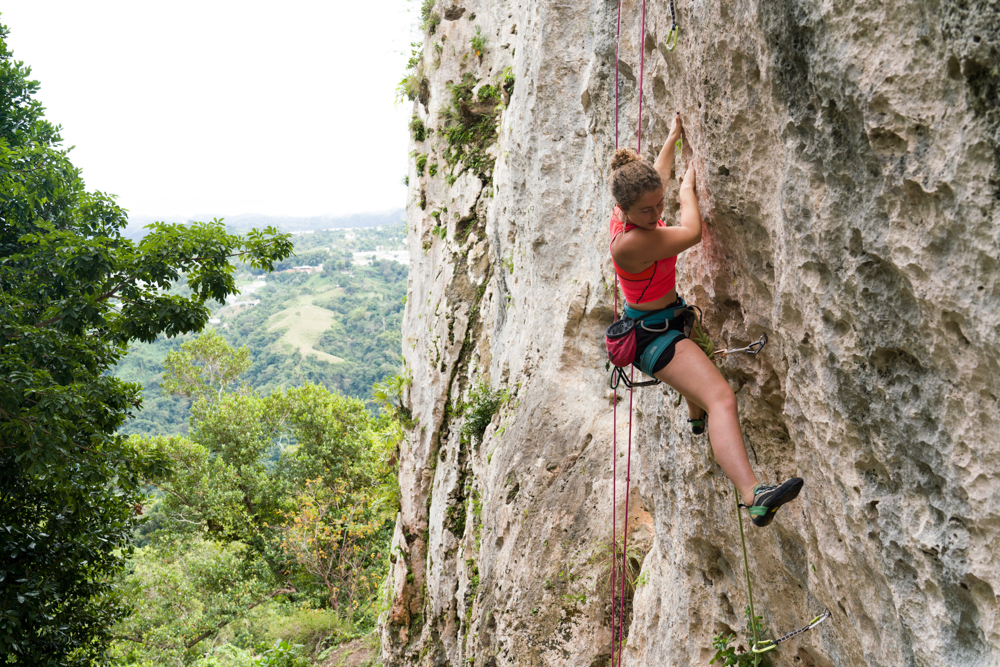
Sport climbing is the act of climbing up a route, using existing hand holds and foot holds. Sport climbers use quick draws, which on one end attach into pre-existing bolts drilled into the wall, and on the other, attach to the rope. A quick draw consists of two carabiners attached together by a length of very strong webbing. Sport climbers bring 5-20 of these quick draws with them to make sure they have enough protection to make the route safe. Once the sport climbers make it to the top of the route, they clip into the existing anchors and may lower down.
The existing hardware (bolts and anchors) are put in by the route’s first ascensionist. Someone established the climb, and did the hard work to make the route safe. It is up to the climber’s who follow in their footsteps to bring the appropriate skills and equipment to make it to the top safely.
Top Roping
Top roping is the most common type of climbing for beginners, however it is not exclusively reserved for the inexperienced.
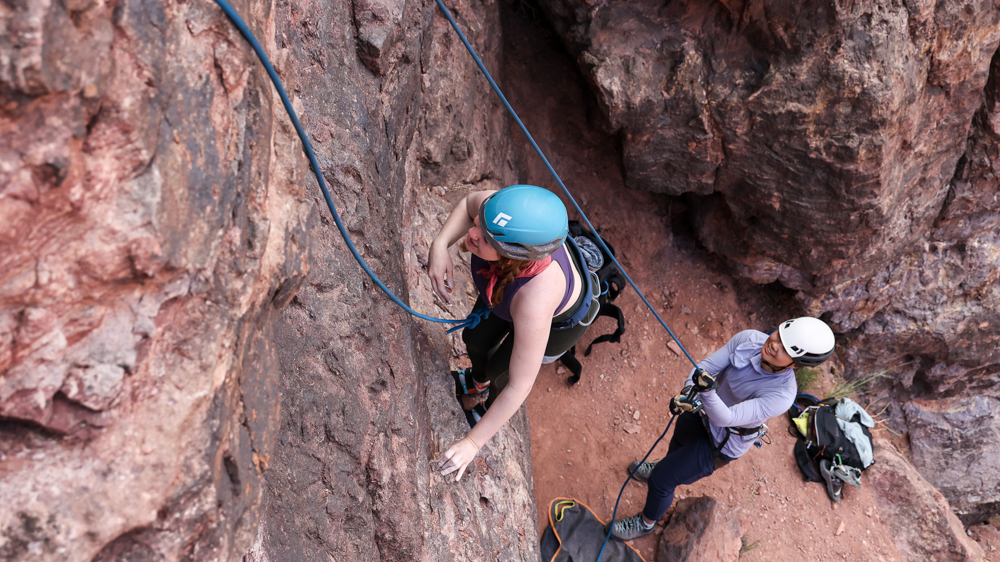
Top roping both inside and outside requires someone to have gone up to the top of a route and prehung a rope for others to top rope on. Outside this usually means someone will have to lead the route before you and set up a top rope.
Top roping allows climbers to get a feel for rock climbing while having the safety of being on a rope.
In order to safely top rope, you also need to have a competent belayer who knows how to top rope belay and lower. These skills can be learned at your local climbing gym, or from an experienced climbing guide!
Trad Climbing
Trad climbing is very similar to sport climbing, except that instead of clipping quickdraws to protect the route you are leading, you place a variety of rock protection.
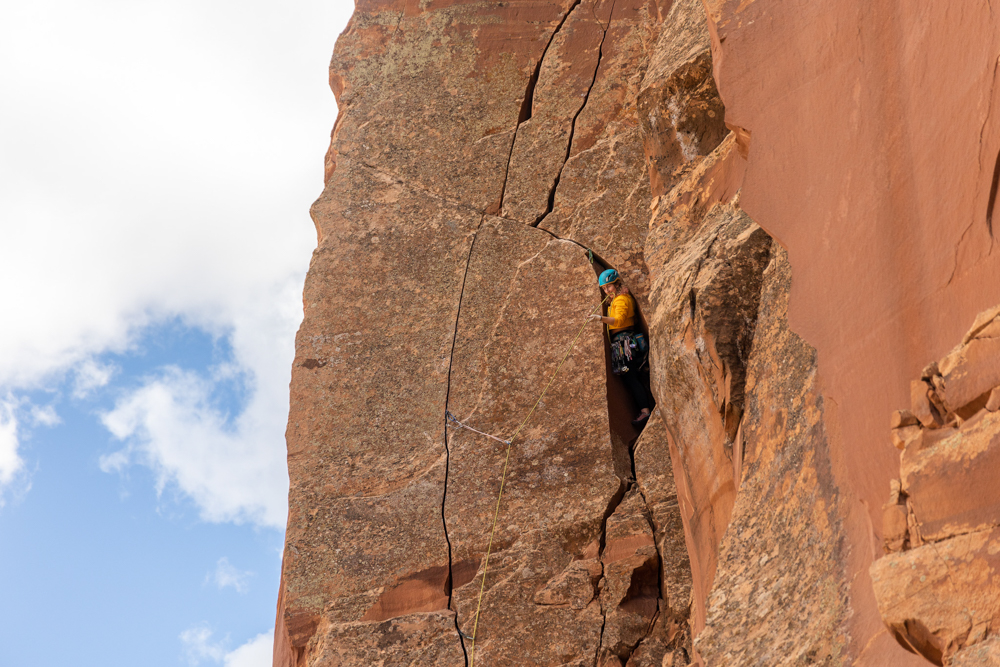
Rock protection can include camalots (cams), nuts, and sometimes quickdraws too. This type of protection comes in a variety of sizes from less than a centimeter, to over a foot in size. In order to protect a route while you are leading it, you place these cams inside the cracks in the cliff face or mountain side.
If there are no cracks or pockets where trad gear can be placed, then the route cannot be trad climbed. In that instance the route would be considered a sport climb, IF someone deemed the rock face interesting enough to climb.
Trad climbing often incorporates the use of crack climbing which is a style of climbing that involves jamming your hands and feet into cracks in order to move up, rather than pulling on or stepping on existing holds on the wall.
Aid Climbing
Aid climbing separates itself from other styles of rock climbing in that you don’t use your hands and feet in order to pull yourself up a climbing wall. Instead, aid climbers rely on the placement of rock protection (such as cams, nuts, and even quickdraws) to “aid” them up the wall. They place a cam, clip a webbing made ladder to it, and stand up in the ladder. Then they place another cam.
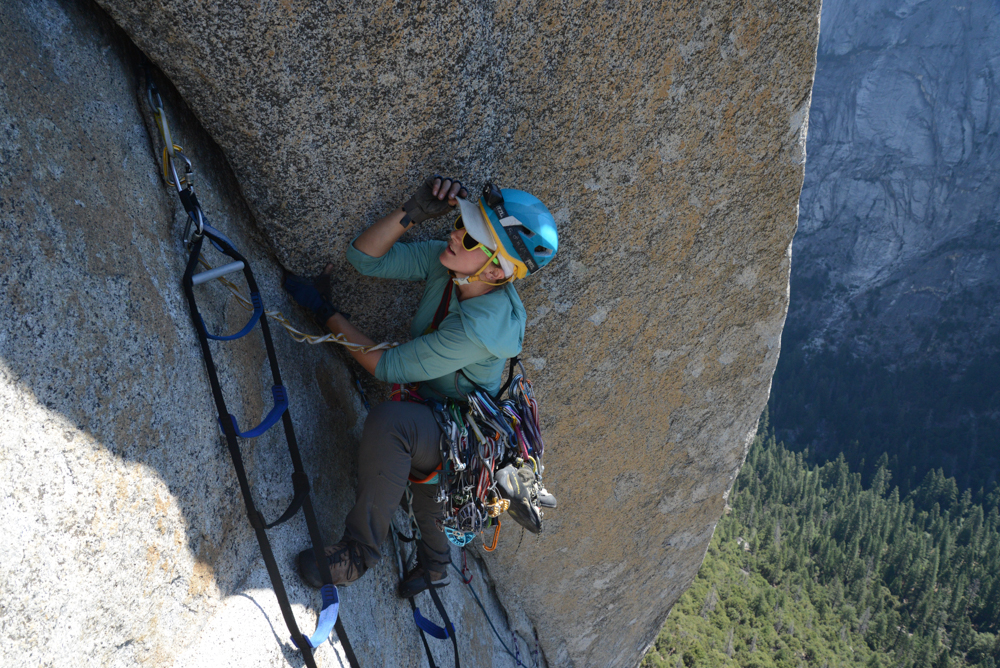
This process of aid climbing allows climbers to access routes that are much harder than they could climb using just the strength of their hands and feet.
Now that we’ve gone over all the types of climbing. It’s time to get into what gear you will need! This will be covered in A Beginners Guide to Rock Climbing Part 2, released next week!
About the Gear Tester
Kaya Lindsay is a writer, photographer, and filmmaker with a passion for rock climbing and the outdoors.
In 2016 she converted a Sprinter Van into a tiny home and has been traveling around the US & Canada to pursue her passion for rock climbing. Since hitting the road she has begun a career in filmmaking and is currently working on her One Chick Travels series, highlighting solo female travelers who live and work to pursue an adventurous lifestyle. Her films have been highlighted by major brands such as Backcountry and Outside TV. To fulfill her passion for writing, she chronicles her many adventures in her blog. Professionally, she writes for the adventure sports company Outdoor Prolink and The Climbing Zine. Kaya hopes to spend many more years in her tiny home on wheels, Lyra, and is currently living in Moab Utah.

